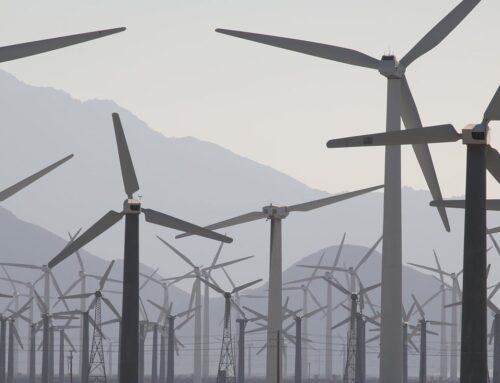Shapiro files complaint about higher energy prices
January 1, 2025
HARRISBURG — Sixty-five million people turn the lights on every day thanks in large part to the oversight of the nation’s largest power grid operator, PJM.
Thirteen states, including Pennsylvania, plus Washington D.C., rely on the century-old organization to manage the flow of power across the system minute-by-minute, as well as plan for future electricity needs — like more power to supply data centers, electric vehicle charging stations, and energy storage for solar and wind farms.
PJM, however, can only plan within the parameters set by state and federal governments. That is, thick red tape and tax breaks meant to incentivize the development of new power producers – as critics and independent market monitors have warned – appear to have accelerated the retirement of fossil fuel plants faster than developers can get renewable replacements up and running.
The grid operator’s most recent auction to secure enough power to meet demand in the coming year illustrated the point starkly: the cost to run the grid will climb 800% as of June 1, meaning utility bills will skyrocket by roughly 30%, according to multiple estimates.
Gov. Josh Shapiro said Monday that PJM is to blame. In a complaint filed with the Federal Energy Regulatory Commission, the administration said the power grid needs to adjust the math used in its auctions and speed up the approval of new energy projects to prevent a $20.4 billion hit to consumers.
“As the demand for energy continues to increase, my administration is taking action to demand PJM fix its broken processes and adopt common sense reforms that will allow us to produce more power and meet record-high electricity demand, while keeping costs low for hardworking families,” he said. “My administration stands ready to support PJM in implementing these reforms to ensure safe, reliable, and affordable power for consumers for the long term.”
It’s not that simple, however.
Nearly all the planned projects in line for construction are for renewable resources – think solar, wind and battery storage. Clearing the backlog is slow, and projects given the go-ahead by PJM still must overcome permitting challenges and fluctuating supply chain prices that extend initial construction timelines by years.
As such, PJM has warned that many of the coming replacements won’t be up and running within the next two or three years, meaning the cost to support the system in the interim will rise.
It’s a chain reaction for which lawmakers and regulatory agencies have much greater control, of which PJM is neither.
In Pennsylvania, the “P” in PJM, 25% of the energy necessary to power the grid is generated. And the tension between renewable energy investment and fossil fuel power generation has been boiling over in the commonwealth for years – ever since former Gov. Tom Wolf signed the state up for the Regional Greenhouse Gas Initiative without legislative support.
The initiative charges power plants for air pollution and uses the money collected to support energy efficiency projects. Unlike the program’s 11 other members, Pennsylvania’s leading role as an energy exporter and natural gas producer meant penalizing such plants could cripple one of the state’s most lucrative industries.
Up Next – Pope prays for ‘wounded life’ on World Day of Peace
In 2023, the Commonwealth Court struck down Wolf’s executive order as akin to implementing a “carbon tax” without legislative approval, as required by the state constitution.
Shapiro appealed the decision, promising only to drop it if lawmakers approved his Pennsylvania-centric version of the program.
The uncertainty hasn’t helped attract investment across the board. And it ripples out to the rest of the power grid, where other states have other priorities – like more aggressive renewable energy targets, the need for more power generation, or both.
Sen. Gene Yaw, R-Williamsport, told The Center Square in September he’s discussed the issue with the Shapiro administration, but wasn’t sure to what avail.
“We don’t have an energy policy – that’s the overriding problem,” Yaw said. “There’s a hodgepodge of things going on, and this affects PJM. Different states are doing different things. It’s like PJM is being dealt cards; I’m not sure how they play them.”
Yaw recently proposed creating a Pennsylvania Baseload Energy Development Fund, which would give low-interest grants and loans to electricity generators to build, maintain, modernize and run their plants.
“We must play a more active role in incentivizing generation and addressing looming reliability challenges with market-based solutions,” he said. “The Pennsylvania Baseload Energy Development Fund can help us supply the grid with reliable, cost-effective energy, as well as the infrastructure and workforce to maintain it.”
At the federal level, two key Trump nominees expected to shape energy and environmental policies are former North Dakota Gov. Doug Burgum, selected to serve as both Secretary of the Interior and chair of the newly formed National Energy Council, and Chris Wright, nominated as U.S. Secretary of Energy, and member of the National Energy Council.
A statement from the Trump Transition Team explained that the National Energy Council will consist of all departments and agencies involved in the permitting, production, generation, distribution, regulation, and transportation, of all forms of American energy.
Their mission is to oversee the path to the country’s energy dominance by cutting red tape, enhancing private sector investments across all sectors of the economy, and by “focusing on innovation over longstanding, but totally unnecessary, regulation.”
Energy dominance, the statement says, will drive down inflation, win the AI arms race with China – and others – and expand American diplomatic power to end wars across the world.
Search
RECENT PRESS RELEASES
Related Post




